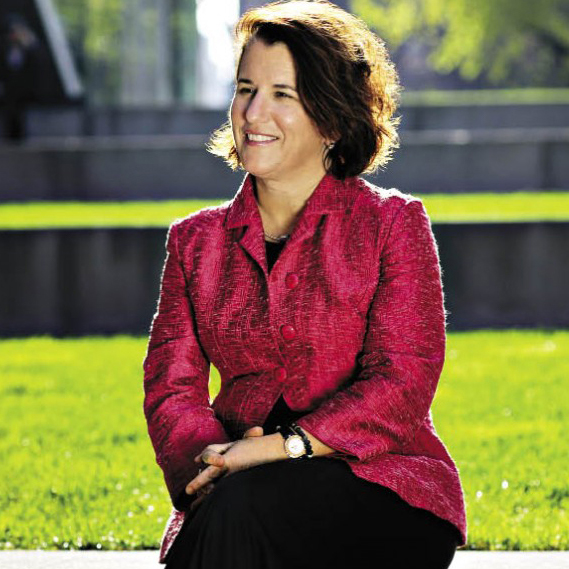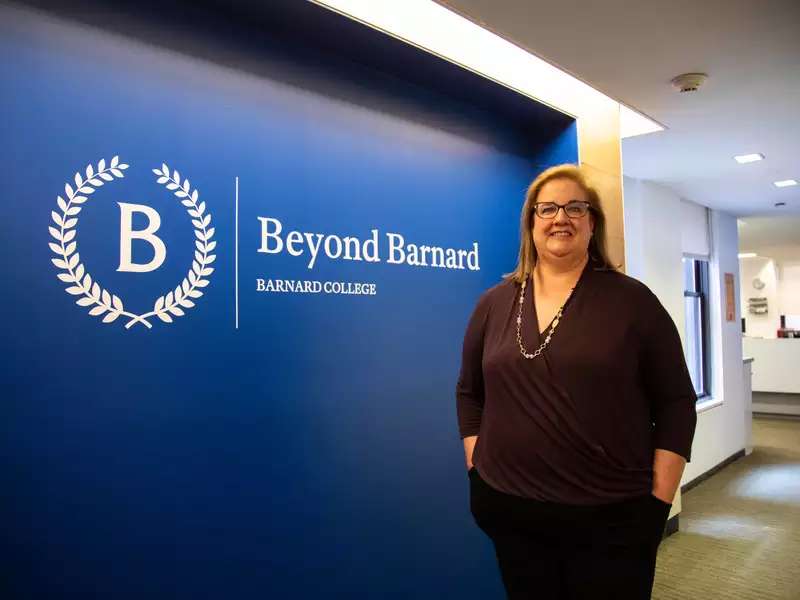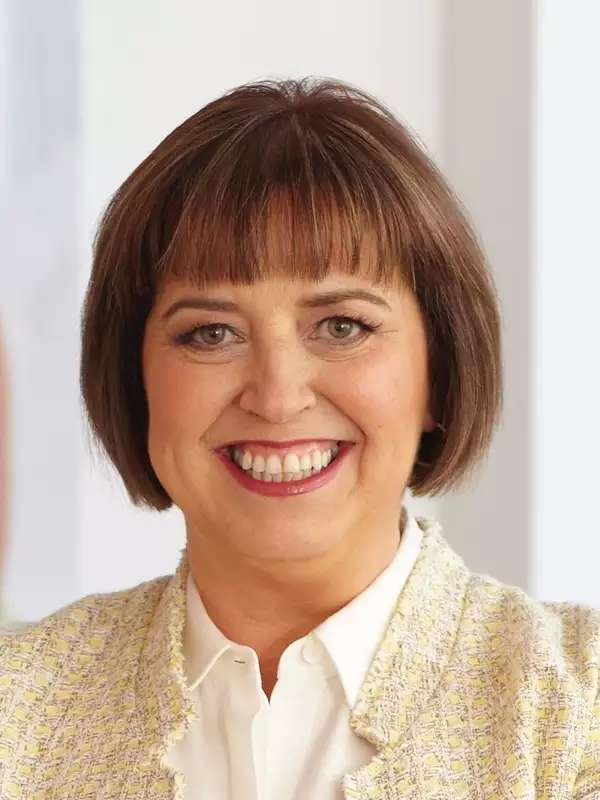Three years ago, on March 13, former President Donald Trump declared a national emergency regarding COVID-19. Many businesses shuttered their doors as a result.
March 14 is Equal Pay Day, a public awareness event created in 1996 by the National Committee on Pay Equity to highlight the gap between men’s and women’s wages.
These two dates may seem unrelated, but they are connected by how women’s economic realities — including their fight for pay equal to that of their male counterparts — have been notably impacted by the COVID-19 pandemic.
Three of Barnard’s key economic thinkers recently sat down for a roundtable discussion about the continuing impact of the pandemic on women, and women of color specifically, including the benefits (or, at times, the dearth) of flexible work as it relates to wage parity and advancement, as well as policy and cultural shifts that point to improvement:
- Linda A. Bell, Provost and Dean of the Faculty and Claire Tow Professor of Economics
- Elizabeth Ananat, Mallya Professor of Women and Economics
- Homa Zarghamee, associate professor of economics
Below are excerpts from their talk:
What is the current gender wage gap in the United States?
Zarghamee: The last few years, the gender wage gap in the U.S. has stayed largely the same. It’s 83% for full-time workers at the median.
That means if you line up all the female workers — from those earning the least to the most — and compare the middle woman to the middle man from the lineup of male workers, then the woman is making 83% of what the man is making. This is the statistic if we compare only white women and men. Black women make 91% of what Black men make at the median. Hispanic women make 86% of what Hispanic men make at the median. And Asian women make 79% of what Asian men make.
What steps can be taken to address this gap?
Provost Bell: The statistics we’re giving you are aggregate statistics, and they have a lot of “mush” behind them. So, from the perspective of what matters most to equalizing opportunity, it’s [necessary] to understand what lies behind those numbers to help to educate people about what their financial futures will look like, given certain sets of choices that they make, and to try to identify where discrimination in the labor market occurs. That’s a very specific place-based analysis that needs to happen.
One of the discouraging things is that even after we identify these instances of discrimination, correcting them is more difficult today because our laws have moved in a direction that makes it increasingly hard for that to occur.
We learned that having more generous unemployment insurance can prevent a lot of hardship.
This year’s Equal Pay Day is one day after the third anniversary of the national COVID-19 shutdown. What impact has the pandemic had on women in the workplace?
Zarghamee: When looking at the massive decline in labor force participation, the big difference was not between men and women — it was between people with college degrees [and those] without college degrees.
Provost Bell: Another way to think of the labor force participation gap is as an occupational phenomena. We know that COVID had impacts that were differentiated across occupations. And occupations that are traditionally held by a higher percentage of what we call low-skilled workers were more impacted — occupations in the service sector, such as restaurant work, cleaning services, retail. Occupations in the low-pay sector tend to be more heavily populated by women and by women of color. People in those jobs were not able to work remotely. Many lost their jobs or their healthcare coverage, and often both.
Zarghamee: There were different [COVID] exposure [levels] depending on the types of jobs people have. The 2020 Census had a Pulse report asking people who were not working the most important reason they weren’t working. There was a racial disparity between white mothers and Black mothers, with white mothers citing having to engage in child care as the most important reason, whereas for Black mothers it was being laid off or furloughed, having COVID themselves, or taking care of somebody who was sick with COVID. And because these are Black mothers, you can [assume] that there are child care [concerns] as well — but these other factors are weighing even more for them.
What, if anything, has improved for those workers who were displaced and laid off?
Ananat: We tried a lot of things during the pandemic, policy-wise, that we had not, as a country, been willing to try before.
We learned that having more generous unemployment insurance can prevent a lot of hardship. We [also] learned that there are problems with the administration of our unemployment insurance system because it’s administered separately by 50 states.
With the child tax credit, we saw that it was possible to radically cut the level of hardship that [some experience]. We brought food hardship down to the lowest level that we’ve ever seen and dramatically narrowed the racial gaps in that indicator. So we can alleviate child hunger — it turned out to be straightforward, pretty easy to administer, and highly effective, and it did not have any effects on parent labor supply.
More people recognize how essential the child care industry is and how a lot of the wage disparities [in that industry] are driven by the gender gap and the racial wage gap. Workers in these care fields have been historically underpaid because they are feminized and racialized. Today, a lot of states are struggling in their child care system [and] are moving to expand paid family leave and sick leave.
And finally, women and service workers really did get fed up. We are seeing that in this nascent labor movement. For example, unionization in Amazon factories, unionization in Starbucks, walkouts by nurses. I would have said three years ago that I was very pessimistic about labor movements in the United States and, right now, I’m much more optimistic.
Provost Bell: I’ll add another positive, which could have both immediate and long-term impacts: The workforce is now a more flexible place, [which] benefits more marginalized workers, [including] people with other obligations, all women, and especially women of color.
Why do more flexible work situations benefit marginalized workers?
Provost Bell: Historically, one of the issues for very poor workers and job loss was absenteeism, which was often caused by crises in the house. If you have preschool or primary school children and they get sick, you need to stay at home and care for them. The workplace was a really inflexible place, particularly at the low end of the labor market, in terms of wage scale. So people lost their jobs because they couldn’t show up, and they couldn’t show up for legitimate reasons.
What the women’s movement was pushing for [for] some time was to [let go] of this idea that you have to work from nine-to-five, five days a week, and that you can’t make up lost time in a flexible way — an idea that seemed to permeate across the labor market.
Zarghamee: When the pandemic started, I was teaching my Economics of Gender class. We read this paper by a Harvard economist about how the last step of closing the gender gap has to do with increased flexibility of jobs, meaning that women can substitute work later for work now and not be as penalized if they leave work to take care of kids. The rise of working from home and greater flexibility were predicted to be a good effect of the pandemic for workers in general, and mothers in particular.
But there have been studies showing that people are willing to take a hit in wages to be able to work from home. If it’s women who ended up being the ones more likely to take jobs that allow more work from home, they might be taking a wage hit that might actually exacerbate the gender earnings gap.
As we come to another Equal Pay Day, what can the next generation of women to enter the workplace do?
Provost Bell: In addition to standing up for yourself, understanding roles and responsibilities, and making sure that you are actively considered for opportunities for advancement in your current workplace. On the planning side, financial literacy is extraordinarily important for all adults, and that’s why it’s being prioritized as an element of Wellness in the Francine LeFrak Center project.
It’s very important to be able to plan for what your financial life is likely to look like, during certain life events, conditional on whatever choices you make around occupation. We're trying to build a co-curricular structure around making sure that students have access to opportunities to think not just about where they’re going post-college, but the impacts of their choices on the kinds of financial certainty, and uncertainty, they’ll have in the future.
For more on the topic of wage parity, listen to President Sian Leah Beilock’s talk with Mercer, about embracing equity, inclusion, and belonging:




